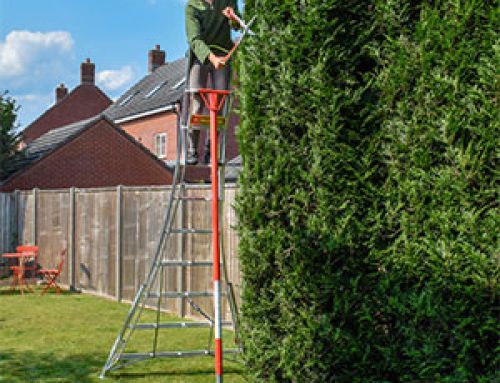They say you’re only as old as you feel, but when it comes to climbing ladders “feeling young” won’t cut it from a safety perspective. It doesn’t matter how youthful someone feels, everyone is prone to age-related balance issues as our bones start to become less dense. This process starts around age 35 but isn’t normally an issue until we get into our late 50s and 60s. At this age, the bones in the inner ear are significantly lighter and therefore less able to detect the changes in pressure and movement that come from being off balance.
Hearing is also used in balance – in fact both hearing and vision aid our sense of balance, If you try standing on one leg with your eyes closed and earplugs in, you will find it almost impossible not to fall over. This means that age-related deterioration in hearing and eyesight also contributes to poor balance.
Hearing and eyesight impairments can also affect younger people; Even a child that has sensory difficulties with hearing and seeing, will find climbing ladders to be a dangerous task regardless of their age.
A coroner in Tasmania ruled on an accidental death earlier this year, where an 81-year-old man died after falling from a ladder at his home. The deceased was attempting to put up a sunshade and was standing on the top rung of an A-frame stepladder when he lost his balance. The man had either ignored, or had failed to see a faded safety warning on the equipment instructing users not to stand on that top rung.
Although the man in this case had been using the ladder in an unsafe manner, which contributed to his death, the coroner said it was “inadvisable” for an 81-year-old to be using a ladder, noting that several deaths in recent years have been caused by older men working at height. Instead, the man should have hired someone to do the job for him, or asked a younger neighbour for help.
An 84-year-old man in Reading died this year after falling from a ladder while trimming a tree in his garden. The inquest heard that he suffered a catastrophic brain injury, as well as two cardiac arrests while paramedics attempted resuscitation. Although the victim in this case was described as “fit and healthy” this is still relative to his age, and he would have been affected by age-related hearing and balance problems.
In both cases, the men were alone when the accidents occurred, and it is unknown whether the presence of another person would have changed the outcome, had help arrived sooner after these falls.
The age at which people ought to stop climbing ladders, with the exception of smaller indoor stepladders or safety steps, depends on some health factors. People who use ladders regularly and are therefore used to working at height and climbing may be safe on ladder well into their 70s. Those who exercise regularly and maintain their core strength and balance, will also find they are capable of ladder climbing into their 70s. People who don’t have good muscle density or strength may find that ladders are unsafe from age 60.
A good middle ground age for stopping climbing ladders – especially unsecured ladders and where the height climbed exceeds the height of the person – is 65. Of course, the health and lifestyle factors we’ve mentioned will impact this, but it’s a good guideline age to re-assess whether it is safe to be up a ladder and when it is time to call on the services of a friend, family member or professional ladder user.






Leave A Comment
You must be logged in to post a comment.